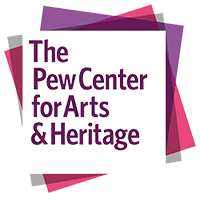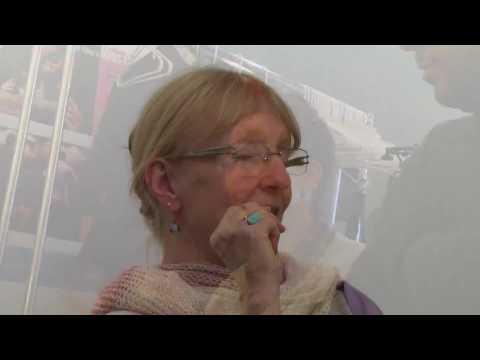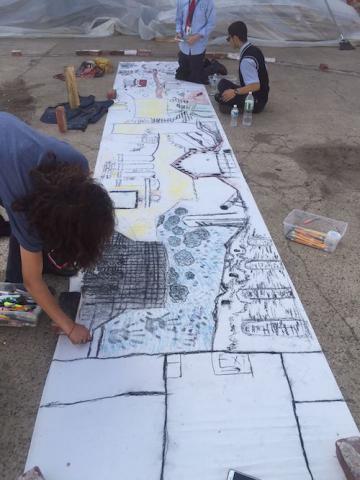Project Note: Faustin

Project Note: Faustin
How To Make A Circle
as told to Lauren Bakst
Faustin Linyekula is a Re-PLACE-ing Philadelphia Artist/Thinker. Project Notes document and articulate Faustin's process and engagement with Philadelphia as he develops new work that will be presented here in April 2016.
On April 4, 2015, Faustin Linyekula spoke with Lauren Bakst about his process and how it might make contact with Philadelphia.
“I believe that being an artist is just another way of being a citizen. Through my practice, I acknowledge that I’m a member of a community. Whether it’s a small neighborhood or the scale of a city or country, I acknowledge that I’m a part of that. How, with my practice, can I contribute to what our life is together? There is a figure—whenever we think of dance in the traditional African context, the first figure we imagine is a circle. And really, the ideal of a circle—it’s a beautiful ideal. The ideal of a community being together, shoulders against shoulders, supporting each other, something circulating between them. It’s an ideal, and it’s maybe the world as it should be but it’s not the world we live in. We live in a world where, whether you are in America or the Congo, it’s constantly about these walls and confrontations.
The circle is also like a kind of constitution—we spend the rest of our lives trying to get closer to those ideals. I approach my work with the frame of being a citizen, but as an artist, I am in a position where I can embrace all the contradictions.
The main difference being that, if i’m doing militant work, I have to choose my side. It’s black or white because you’re on the battlefield. As an artist, the work ceases to be black and white, and it becomes more complex. That’s when we can begin to say something deep about who we are. We can face our own paradoxes, and then build something from there. Re-PLACE-ing Philadelphia, for me, is really just like the work that I do back home. It’s how I try and relate with my community through my work. It’s how we try and put the arts really in the middle of places where from the onset you might think, Oh, they don’t need art because they need food, they need to have better schools, or a hospital. The arts are useless…My answer to that sentiment is to say, No, actually, in places where everything is going really bad, yes, of course we need schools and hospitals, but we also need art. We need to take care of the spaces where people are always pushed to reimagine themselves. It’s only then that we can invent a future.
Working in the Congo with these questions—like how to be part of the community but with my work—it’s important that there is a lot of listening on my part. If I’m the only one talking, then I miss a lot of what is really a greater concern for the people. To give an example, right now, the next big project that we’re working on in Kisangani is not a new piece—it’s a water treatment plant. My original idea was to build a neighborhood art center in Kisangani, but then, I was hearing that the people are always talking about this water problem. So we try to imagine something around these components—a pilot project here where we actually build a water treatment plant. It won’t cover all the needs in the district but it can cover the needs for 5,000 people in that neighborhood. It’s a beginning. And, because my initial idea was to have a small art center in the neighborhood, we decided to combine the two, using the metaphor of water as a source. It’s a place where people can come and fetch clean water but also where kids can learn how to move, act, make music, and also technical production—how to record, film, and edit, how to invent their own stories. They can come and watch a play or a dance piece or a film but it’s also just a place where they can come to fetch water. The project took this direction from my conversations with the community.
So, coming to Philadelphia, at this stage, I’m trying to identify an entry point, and to identify the people who I can work with here. One thing for sure is I will not be flying artists from outside. I will work with people who are here. So I’ve been meeting people and the idea is to try to enter into conversation. But also, I come with my own propositions—like right now i’m concerned with this ideal of a circle. How to make a circle, and if at all it’s possible, because it’s never a given. How can everyone take responsibility towards making a circle, or at least creating the possibility of a circle, of a community? It can take many forms. It could be in the form of just reading the constitution of the United States and saying Oh, Philadelphia, in the making of this constitution, in the shaping of the ideals of this country, played a major role. So, what is left of that? How do you see us today imagining something of that? I’m sitting with these questions, I’m beginning to meet people, and it’s from those dialogues that something will emerge.”
Faustin Linyekula is a dancer, choreographer and self-described storyteller. He is a Re-PLACE-ing Philadelphia Artist/Thinker.
Lauren Bakst is the Re-PLACE-ing Philadelphia Interlocutor.





